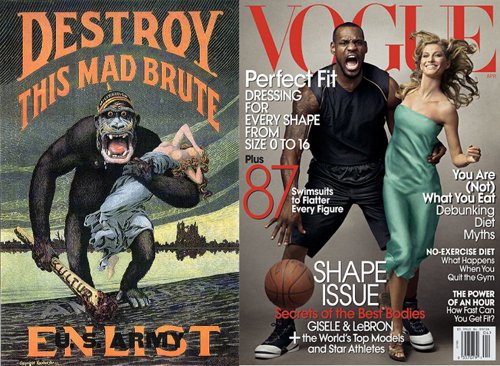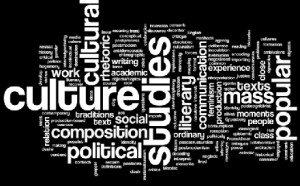Mulling over Methods
While some scholars lament what they see as the end of literary studies as we have known it, others such as Sreevvidya Surendran recognize that literary studies has not disappeared, but it “has suddenly widened to include a cornucopia of diverse media” (Surendran). In his article “Of Methods and Methodologies in Literary Studies and Humanities” Surendran states that incorporating objects of studies from other disciplines into literary studies, literary studies has broadened so much from its original methods and objects of study that it is “almost melding into that field of terrifying and infinite variety: Cultural Studies” (Surendran). This can be seen in many English Departments across the country that combine the Literary & Cultural Studies into one discipline. Where one ends and one begins is a debate within English Studies departments across academia. This debate centers around issues of funding, legitimacy, and prestige, among other things, as we’ve discussed this semester. It also, however, has a basis in theories, methods, and methodology. We’ve seen similar contentions over methods within the Game Studies narratology versus ludology discussions and World Englishes debates over standardized or community centered English learning.
How to choose which methods to apply to African American Literature and Critical Race Theory within a department are even more complicated by the marginalization of those studies within English Departments. While some universities have African American Literature and Cultural Studies departments, a study of African American literature and/or Critical Race Theory will often be placed within an English Studies department but require scholars to seek classes and expertise in other disciplines and methods from other departments. This is where the interdisciplinary approach to Literary Studies is helpful. However, it’s also where contentions in what are considered acceptable methods can take place. Methods and objects of study within an African American Studies department, Sociology, or Psychology may not be traditionally accepted within a Literary Studies tradition. Therefore, as Surendran suggests, what is needed is “to integrate disparate ideas and identities that teem under the umbrella term of ‘Literature’ and create a method that is not applicable to all, but one that allows itself to be suitably tailored for each research question” (Surendran). Thus, I believe, the major questions in addition to the research questions will guide the approach to history, objects of study, and methods rather than artificial boundaries of study and inquiry based upon disciplinary predetermination and departmental posturing.
A critique over methods is presented by Aldo Nemesio in his article “The Comparative Method and the Study of Literature” in which he claims that contemporary research is more focused on gathering information and not as concerned with producing new areas of knowledge (Nemesio). Nemesio asserts that academic biases and personal vanity impede true literary research or knowledge (Nemesio). By way of example he cites the over 6000 articles about Shakespeare in just one decade (Nemesio). While his claim that no one scholar can access and research all of these articles is valid, his assumption that these articles were only about “celebration, entertainment, or satisfaction of vanity” lacks basis or clear rationale. More importantly, his argument decenters reading texts as objects of study because the finds that method vapid and counter to true learning and knowledge. Instead, he advocates a comparative method of study in which “nationalist” texts are disfavored and human literary study which incorporates “what happens elsewhere . . . in the comparative method” is elevated (Nemesio). While this seems inclusive, multicultural, and multiethnic, it poses a danger for already marginalized departments and studies (such as Asian literature or African American literature) that are already marginalized cultures within the “nationalist” literary tradition. Nemesio is taking a very privileged view of “national” and what literature is by not even considering the possibility that his assumption of what human literary history is excludes a vast number of humans. His attempt at inclusivity is oppressive and his choice of methods reaffirms what already exists in the academy — the larger voices, no matter the canon or “nation”, will be heard.
Nemesio’s view is not a loud voice in the field of methods and literary studies, but it’s one of the ways that African American Literature and indeed, the voice of other marginalized texts and studies have to consider how some methods are privileged over others. As with Surendran’s article, it demonstrates that research and literary study may be influenced through a determination of what methods are available and privileged. They also brings to bear the questions of research and academic careers in departments in which my methods and research questions are not considered as valid as others.

Racialized bodies in American Culture: “Black bodies are already imagined, constructed as exotic, violent, alien, primitive, inferior and thus treated as out of the ordinary by hegemonic discourses and groups. The image below plays on the tried-and-tired trope of Black male sexuality as inherently heterosexual, dangerous and misogynistic.”
-Egbert Alejandro Martina
Because I have chosen to focus my research on Critical Race Theory and African American Literature, both of which involve narrative and counternarrative, the inclusion of Cultural Studies is necessary in order to examine the ways in which race and identity are created through, among other things, the media, law, art, music, and texts. I anticipate that my research will borrow heavily social science methods as well as law in forming methodologies and theories. These methods will include, but are not limited to social science methods such as:
Archival research – Articles, other research and data already collected, manuscripts, first-person accounts of important events and life stories, databases, etc.
As evidenced by just some of the methods above, the methods I will use vary widely as are the academic departments and theories I apply to my research. In fact, Kim Fahle’s October 28, 2014 comment on my last paper “For instance do you see yourself using legal and cultural documents to contextualize and interpret literature, or are you examining literature in conjunction with other documents as equivalent texts that provide a window to theorize and discuss racialized bodies?” has helped shape the direction of my research because I was, until then, trying to articulate how I was going to approach the discussion of racialized bodies. Knowing the research question or at least the direction of the research question is essential in determining methods. I am going to use literature and other documents as equivalent texts to theorize and discuss racialized bodies. Legal methods will included written law, quantitative and qualitative analysis of the law and public policy, and a historical view of the law. Much of my approach to incorporating Cultural Studies into my research will include the above social science and legal methods. Thanks, Kim!
Works Cited
“Ethnographic Research.” Experientia Putting People First. N.p., n.d. Web. 02 Nov. 2014.
Miller, Robert. “BIOGRAPHICAL METHODS.” The A-Z of Social Research (2003): n. pag. : SAGE Research Methods. SAGE Publishing, 2003. Web. 02 Nov. 2014
Nemesio, Aldo. “The Comparative Method and the Study of Literature.” CLCWeb: Comparative Literature and Culture. Purdue University, Mar. 2007. Web. 27 Oct. 2014.
Pink, Sarah. “VISUAL METHODS.” The SAGE Dictionary of Social Research Methods (2006): n. pag. : SAGE Research Methods. SAGE Publishing, 2006. Web. 02 Nov. 2014.
Surendran, Sreevidya. “Of Methods and Methodologies in Literary Studies and Humanities.” Sociological Imagination. N.p., 27 June 2011. Web. 27 Oct. 2014.



